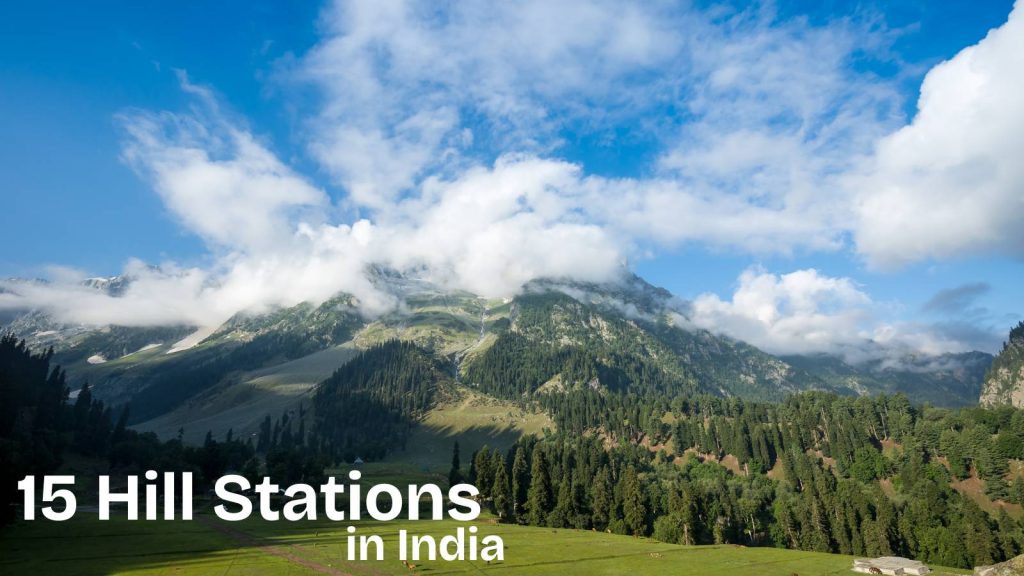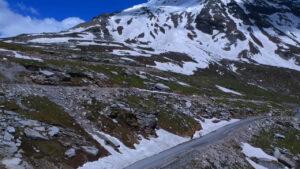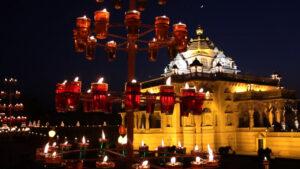India boasts thousands of breathtaking landscapes, yet most travelers often stick to familiar destinations like Manali, Shimla, Ooty, and Darjeeling. In recent years, a growing number of travelers are seeking underrated hill stations in India, aiming to experience serene destinations away from crowded tourist spots. These lesser-known hill stations provide a perfect escape, offering tranquil surroundings, rich natural beauty, local culture, and a chance to truly unwind.
Find 15 of the most underrated hill stations in India, giving opportunity to enjoy extraordinary places before they become mainstream. Know essential details on how to reach each destination, the best places to stay, key activities, ideal visiting months, and what makes each location special—making it a complete and practical resource for anyone planning a unique mountain getaway.
15 Best Underrated Hill Stations in India
- Ziro, Arunachal Pradesh
- Chakrata, Uttarakhand
- Tawang, Arunachal Pradesh
- Kalpa, Himachal Pradesh
- Kausani, Uttarakhand
- Aritar, Sikkim
- Lambasingi, Andhra Pradesh
- Ponmudi, Kerala
- Patnitop, Jammu & Kashmir
- Yercaud, Tamil Nadu
- Khajjiar, Himachal Pradesh
- Mainpat, Chhattisgarh
- Haflong, Assam
- Matheran, Maharashtra
- Araku Valley, Andhra Pradesh
1. Ziro, Arunachal Pradesh
Located in the lush hills of Arunachal Pradesh, Ziro Valley is one of India’s most serene and culturally rich hill stations, offering travelers a peaceful escape from crowded tourist spots. Renowned for its picturesque landscapes, mist-covered hills, and sprawling rice terraces, the valley is home to the Apatani tribe, celebrated for their sustainable lifestyle, bamboo and cane homes, and distinctive facial tattoos and nose plugs.
With cool weather throughout the year, Ziro provides an ideal setting for nature lovers, photographers, and those seeking tranquility. Recognized as a UNESCO World Heritage Site nominee, the valley is also famous for the annual Ziro Music Festival, which draws indie music enthusiasts from across India and abroad, blending music, culture, and natural beauty into an unforgettable experience.
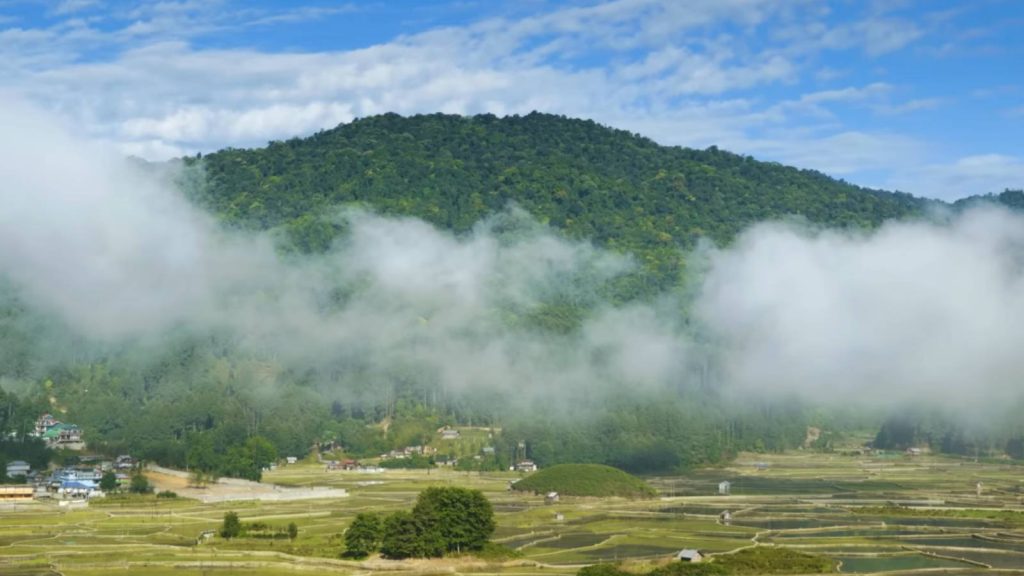
Best Time to Visit
Most comfortable months to visit Ziro are March to June and September to November, when the weather is pleasant, the skies are clear, and the lush green landscape is at its peak.
During the monsoon, heavy rains can make travel tricky, though the valley becomes even more enchanting with misty hills and waterfalls.
How to Reach
Ziro is well-connected by air, rail, and road, though reaching it requires some planning:
- By Air: The nearest airports are Tezpur Airport (260 km) and Guwahati Airport (450 km). From either airport, you can hire taxis or take shared cabs to reach the valley.
- By Rail: The closest railway station is Naharlagun (100 km), from where taxis are available to reach Ziro.
- By Road: Shared taxis and buses operate regularly from Itanagar and Lakhimpur, offering scenic drives through hills and forests.
Where to Stay
Ziro offers a variety of accommodations ranging from homestays to resorts, providing visitors with comfort and local hospitality:
- Siiro Village Homestay: Traditional homestay experience with warm hospitality, local cuisine, and close proximity to rice fields.
- Ziro Valley Resort: Comfortable resort with modern amenities and stunning views of the valley.
- Alohoma Homestay: Ideal for travelers looking for a peaceful, cozy stay surrounded by nature.
2. Chakrata, Uttarakhand
Chakrata is a serene cantonment hill station tucked away in the dense pine forests of Uttarakhand. Unlike popular hill stations like Mussoorie or Nainital, Chakrata remains relatively untouched, offering a peaceful retreat away from crowds.
Region is dotted with hidden waterfalls, caves, and quiet trekking trails, making it ideal for travelers who want to reconnect with nature, enjoy adventure activities, or simply relax in a tranquil environment. Its natural beauty, cool climate, and offbeat charm make it one of Uttarakhand’s hidden places.
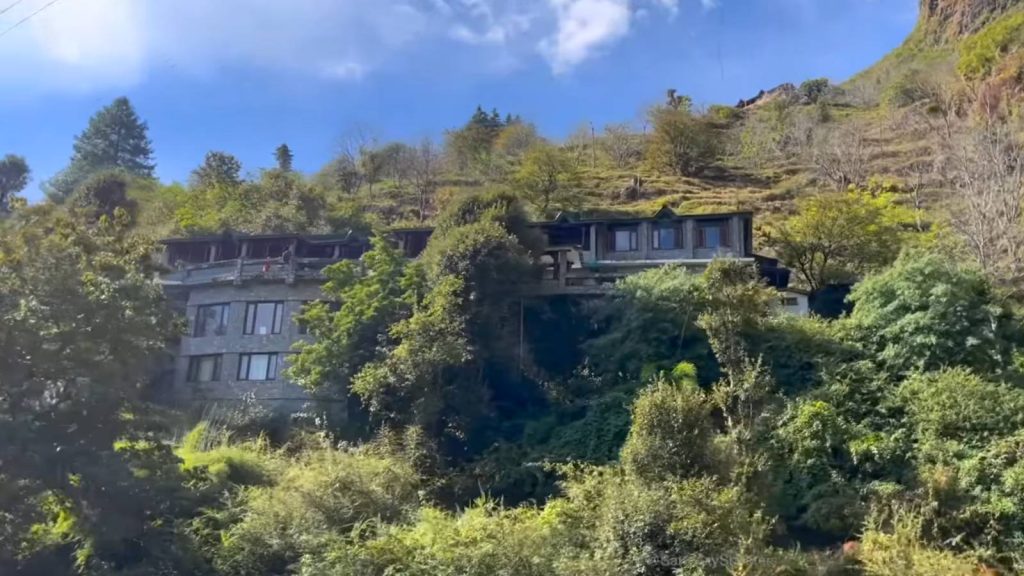
Best Time to Visit
The ideal months to visit Chakrata are March to June and September to November, when the weather is mild, skies are clear, and trekking conditions are favorable. Winters (December to February) can be cold, with occasional snowfall, which adds a magical charm to the pine-covered hills. Monsoons (July to August) are generally avoided due to slippery trails and heavy rainfall, though the forests appear lush and vibrant during this time.
How to Reach
Chakrata is accessible by air, rail, and road, though travel planning is essential:
- By Air: The nearest airport is Dehradun Airport (113 km), which is well-connected to major cities in India. From the airport, taxis or rental cars can reach Chakrata.
- By Rail: The closest railway station is Dehradun (92 km), from where shared taxis or private vehicles can be hired.
- By Road: Accessible via Vikasnagar and Kalsi, the drive is scenic, passing through lush forests, rivers, and hills. Regular buses and shared taxis are available from Dehradun.
Where to Stay
Chakrata offers a range of accommodation options to suit different budgets and preferences:
- Blue Canvas Resort: Modern resort with comfortable rooms, scenic views, and facilities for adventure and relaxation.
- Hotel Snow View: A cozy and budget-friendly option suitable for families and solo travelers.
- Forest-View Homestays: Experience local hospitality and peaceful surroundings with homestays nestled amidst forests, perfect for nature lovers and those seeking solitude.
3. Tawang, Arunachal Pradesh
Tawang is a picturesque hill station located in the northeastern state of Arunachal Pradesh, renowned for its stunning landscapes, vibrant culture, and spiritual significance. Perched at an altitude of around 3,048 meters, Tawang is famous for its Tawang Monastery, the second largest Buddhist monastery in India, which serves as a spiritual and cultural hub of the region.
Surrounded by snow-capped mountains, lush valleys, and pristine rivers, Tawang offers travelers a serene escape, perfect for those seeking tranquility, photography, and cultural exploration. The region is also known for its colorful festivals, local handicrafts, and warm hospitality, making it a unique offbeat destination.
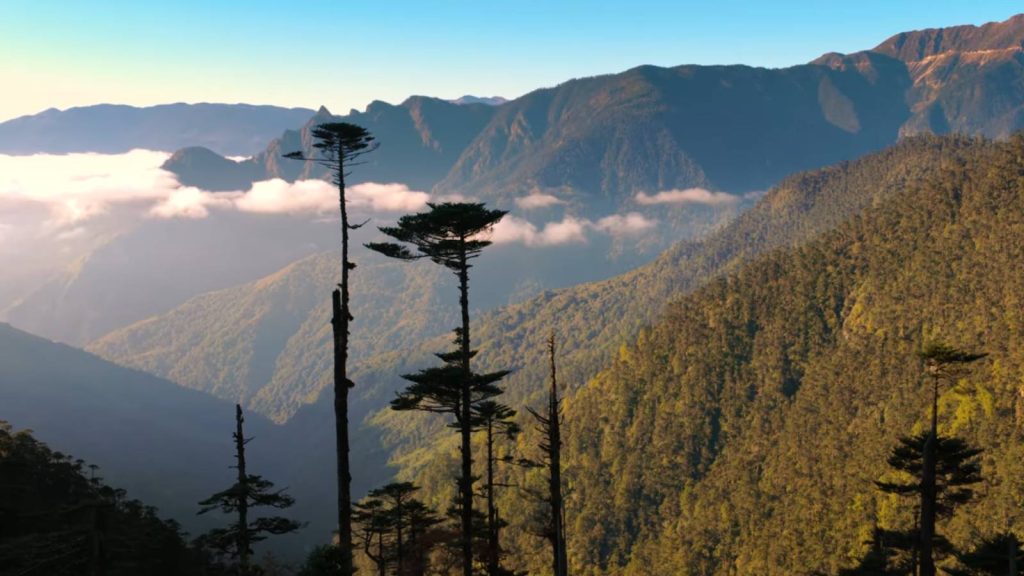
Best Time to Visit
The best time to visit Tawang is March to June and September to November, when the weather is pleasant, skies are clear, and travel conditions are safe. Winters (December to February) can be extremely cold, often with snowfall, offering a magical snow-covered landscape but requiring proper preparation. Monsoon season (July to August) brings heavy rains and landslides, making travel difficult, though the valley becomes lush and vibrant.
How to Reach
Tawang is accessible by air, road, and rail (via nearby stations), though planning is essential due to its remote location:
- By Air: The nearest airport is Tezpur Airport (340 km), with taxi or bus services available to reach Tawang.
- By Rail: The closest railway station is Naharlagun (450 km), from where shared cabs or taxis can be hired.
- By Road: Tawang is well-connected via scenic roads from Bomdila and Bhalukpong, with buses and taxis operating regularly, offering breathtaking views along the way.
Where to Stay
Tawang offers a range of accommodations from resorts to homestays, catering to different preferences:
- Tawang View Hotel: Offers comfortable rooms with panoramic mountain views and modern amenities.
- Hotel Gakyi Khang Zhang: A cozy, budget-friendly hotel with warm hospitality and local cuisine.
- Homestays in Tawang Town: Ideal for travelers seeking a more authentic experience and cultural interaction with locals.
4. Kalpa, Himachal Pradesh
Kalpa is a charming hill station nestled in the Kinnaur district of Himachal Pradesh, offering breathtaking views of the Kinnaur Kailash range and a peaceful Himalayan escape. Known for its apple orchards, traditional Himachali villages, and serene landscapes, Kalpa remains relatively untouched by commercial tourism, making it an ideal destination for travelers seeking tranquility and natural beauty.
The combination of snow-capped mountains, terraced fields, and misty valleys creates a picture-perfect setting for photography, trekking, and cultural exploration.
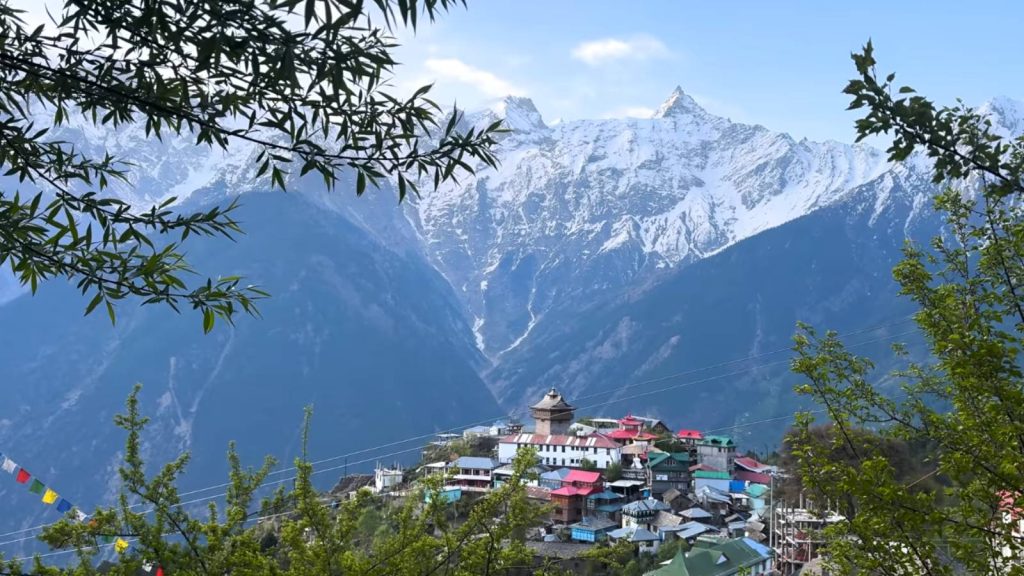
Best Time to Visit
Best time to visit Kalpa is April to June and September to November, when the weather is pleasant, skies are clear, and mountain views are unobstructed. Winters (December to February) are cold with occasional snowfall, creating a magical snowy landscape, while monsoons (July to August) bring heavy rainfall and possible landslides, making travel risky.
How to Reach
Kalpa is well-connected by road, with nearby airports and railway stations facilitating access:
- By Air: The nearest airport is Shimla Airport (245 km), from where taxis or buses can reach Kalpa.
- By Rail: The closest major railway station is Shimla (245 km), with onward travel by road.
- By Road: Kalpa is accessible via Recong Peo, with scenic drives through winding mountain roads. Private taxis and buses operate regularly, offering views of pine forests, rivers, and valleys along the way.
Where to Stay
Kalpa offers a range of accommodations suitable for different budgets and preferences:
- The Apple Orchard Retreat: Comfortable resort surrounded by apple orchards, offering modern amenities and scenic views.
- Hotel Kalpa Regency: Cozy and budget-friendly, ideal for families and solo travelers seeking comfort and convenience.
- Homestays in Kalpa Villages: Perfect for travelers looking to experience local culture, traditional food, and warm hospitality.
5. Kausani, Uttarakhand
Kausani is a serene hill station in Uttarakhand, often referred to as the “Switzerland of India” for its panoramic views of the majestic Himalayan peaks, including Nanda Devi, Trishul, and Panchachuli. Known for its tranquility and natural beauty, Kausani is an ideal destination for travelers seeking peace, spectacular sunrises and sunsets, and an escape from crowded tourist spots.
The region is dotted with tea gardens, lush valleys, and quiet trails that allow visitors to immerse themselves in nature and enjoy leisurely walks or meditation.
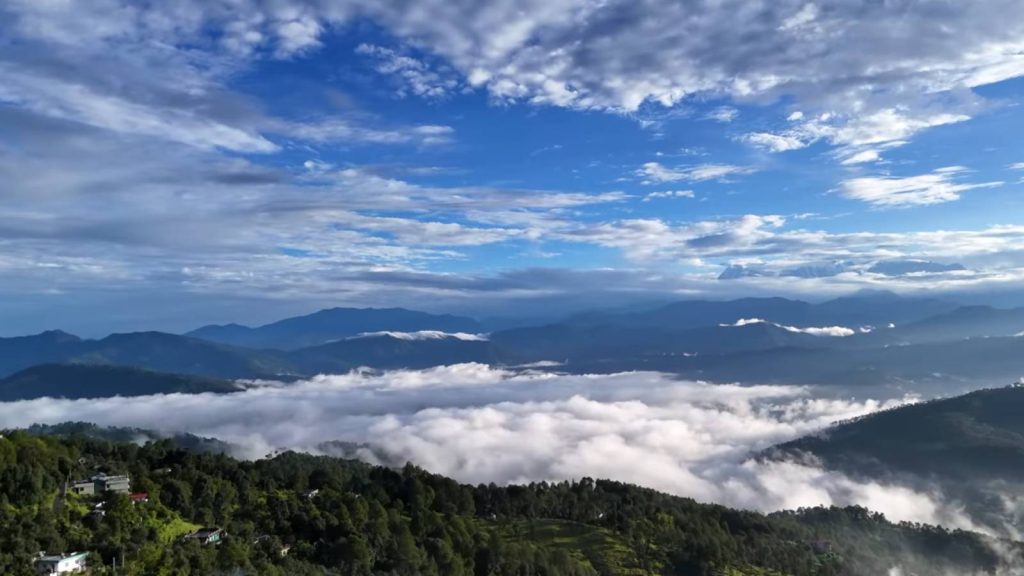
Best Time to Visit
The best time to visit Kausani is March to June and September to November, when the weather is pleasant and the Himalayan peaks are clearly visible. Winters (December to February) can be chilly, occasionally experiencing snowfall, while monsoon months (July to August) bring heavy rainfall, making outdoor activities and trekking challenging.
How to Reach
Kausani is well-connected by road, with nearby airports and railway stations facilitating travel:
- By Air: The nearest airport is Pantnagar Airport (117 km), connected to major cities in India. Taxis or buses are available to reach Kausani.
- By Rail: The closest railway station is Kathgodam (135 km), from where private taxis or buses can reach the hill station.
- By Road: Kausani is accessible via Bageshwar and Almora, with scenic drives offering views of rivers, valleys, and forests. Regular taxis and buses operate from nearby towns.
Where to Stay
Kausani offers a variety of accommodations catering to different budgets and preferences:
- Kausani Resort: Comfortable resort with modern amenities and stunning Himalayan views.
- The Himalayan Village: A boutique stay offering cozy cottages, local cuisine, and a serene environment.
- Homestays in Kausani: Ideal for travelers seeking an authentic experience, warm hospitality, and peaceful surroundings.
6. Aritar, Sikkim
Aritar is a tranquil and lesser-known hill station in Sikkim, known for its lush green landscapes, serene lakes, and peaceful environment. Nestled amidst the eastern Himalayan ranges, Aritar offers a perfect retreat for travelers looking to escape crowded tourist spots and immerse themselves in nature.
The region is dotted with traditional Sikkimese villages, monasteries, and scenic viewpoints, making it ideal for relaxation, photography, and cultural exploration.
Best Time to Visit
The ideal months to visit Aritar are March to June and September to November, when the weather is pleasant, skies are clear, and the lush landscapes are vibrant. During these months, travelers can comfortably enjoy trekking, nature walks, and sightseeing without any weather-related disruptions.
Winters (December to February) can be quite cold, with temperatures dropping significantly, so visitors should carry warm clothing. Monsoon months (July to August) bring heavy rainfall, which enhances the greenery but may make trekking trails slippery and outdoor activities challenging.
How to Reach
Aritar is well-connected by air, rail, and road, making it accessible despite being an offbeat destination:
- By Air: The nearest airport is Bagdogra Airport (110 km). From the airport, taxis, private cabs, or shared vehicles can take visitors to Aritar, offering a scenic drive through Sikkim’s lush valleys.
- By Rail: New Jalpaiguri Railway Station (112 km) is the closest railhead. From here, taxis and buses are available for onward travel to Aritar, making it convenient for travelers coming by train.
- By Road: Accessible via Singtam and Rangpo, the road journey offers breathtaking views of rivers, forests, and hills. Regular taxis and buses operate, making it easy for visitors to reach this peaceful hill station.
Where to Stay
Aritar offers a variety of accommodations catering to different budgets and travel preferences, from comfortable resorts to cozy homestays:
- Aritar Lake Resort: A well-maintained resort providing modern amenities, comfortable rooms, and stunning views of Lampokhari Lake and surrounding mountains, ideal for families and couples.
- Homestays in Aritar Villages: Offers an authentic local experience, with traditional Sikkimese meals, warm hospitality, and close proximity to scenic landscapes.
- Green Valley Retreats: Perfect for travelers seeking peace and solitude, these retreats are surrounded by nature, making it an excellent choice for relaxation, meditation, or nature-centric stays.
7. Lambasingi, Andhra Pradesh
Lambasingi, often referred to as the “Kashmir of South India,” is a hidden gem tucked in the Eastern Ghats of Andhra Pradesh. Known for its misty hills, cool climate, and lush greenery, it is one of the few places in South India where visitors can experience frost during winters.
Surrounded by dense forests, coffee plantations, and winding nature trails, Lambasingi offers a peaceful retreat for travelers looking for tranquility, adventure, and offbeat experiences. Its serene environment and scenic beauty make it perfect for trekking, photography, and nature exploration.
Best Time to Visit
Best time to visit Lambasingi is October to February, when the weather is cool, mornings are misty, and the natural beauty is at its peak. Summers (March to June) can be warm, which may limit outdoor activities, while monsoon months (July to September) bring heavy rainfall, making trekking and other outdoor adventures difficult. Visiting during the cooler months ensures a comfortable and memorable experience.
How to Reach
Lambasingi is accessible by air, rail, and road, though careful planning is recommended due to its offbeat location:
- By Air: The nearest airport is Visakhapatnam Airport (120 km). Taxis or private vehicles from the airport provide the most convenient access to the hill station.
- By Rail: Dwaraka Nagar Railway Station (130 km) is the closest, from where taxis or buses are available for onward travel.
- By Road: Accessible via Chintapalli and Paderu, the scenic drive passes through winding hills, rivers, and forests, offering a visually stunning journey. Regular taxis and private vehicles are available from nearby towns.
Where to Stay
Lambasingi offers a variety of accommodations catering to different types of travelers:
- Lambasingi Homestays: Comfortable and cozy stays offering local cuisine, traditional hospitality, and a peaceful environment, perfect for travelers wanting an authentic experience.
- Eco Camps & Resorts: Ideal for adventure enthusiasts, these camps provide opportunities to camp amidst nature while enjoying basic modern amenities.
- Coffee Plantation Stays: Provides a unique experience surrounded by coffee estates and scenic landscapes, perfect for nature lovers and photography enthusiasts.
8. Ponmudi, Kerala
Ponmudi is a serene hill station located in the Thiruvananthapuram district of Kerala. Nestled in the Western Ghats, it is known for its lush tea plantations, winding roads, and hidden waterfalls, offering a peaceful retreat away from Kerala’s more crowded destinations. With cool weather throughout the year and verdant landscapes, Ponmudi is perfect for nature lovers, trekking enthusiasts, and travelers seeking solitude.
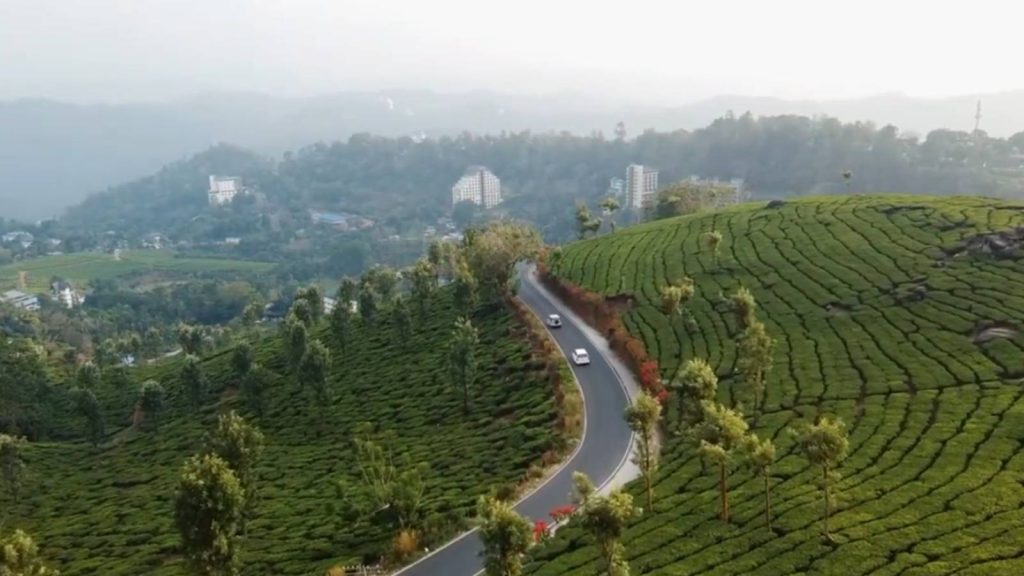
Best Time to Visit
The ideal months to visit Ponmudi are October to March, when the weather is cool, pleasant, and ideal for trekking and sightseeing. Summers (April to June) can be warm, while monsoon months (June to September) bring heavy rainfall, which may make outdoor activities challenging but enhance the lush greenery.
How to Reach
Ponmudi is well-connected by air, rail, and road, allowing travelers to plan their journey conveniently:
- By Air: The nearest airport is Trivandrum International Airport (60 km). From the airport, taxis or private vehicles can be hired to reach Ponmudi, offering a scenic drive through Kerala’s lush landscapes.
- By Rail: Thiruvananthapuram Central Railway Station (60 km) is the closest railhead. From here, taxis and buses are available to cover the remaining distance to Ponmudi.
- By Road: Accessible via Vithura and Trivandrum, the road journey winds through forests, hills, and rivers, offering picturesque views. Regular taxis, private cars, and some bus services make the hill station reachable and convenient for travelers.
Where to Stay
Ponmudi provides a variety of accommodations catering to different budgets and preferences, from cozy homestays to modern resorts:
- Ponmudi Hills Resort: A comfortable resort offering modern amenities, spacious rooms, and stunning views of the surrounding tea plantations and forests, making it ideal for couples and families.
- Eco-Cottages & Homestays: Small, nature-centric accommodations that provide a peaceful and immersive experience amidst the hills. Guests can enjoy local cuisine, fresh air, and serene surroundings.
- Private Resorts: These resorts offer modern facilities, adventure activities, and tranquil environments, perfect for travelers looking for a mix of comfort and outdoor exploration.
9. Patnitop, Jammu & Kashmir
Patnitop is a picturesque hill station located in the Udhampur district of Jammu & Kashmir, perched at an altitude of approximately 2,024 meters. Known for its open meadows, dense pine forests, and panoramic Himalayan views, Patnitop is an ideal destination for families, adventure enthusiasts, and nature lovers seeking tranquility and fresh mountain air. The hill station offers a mix of scenic beauty and outdoor activities, including trekking, paragliding, and winter skiing.
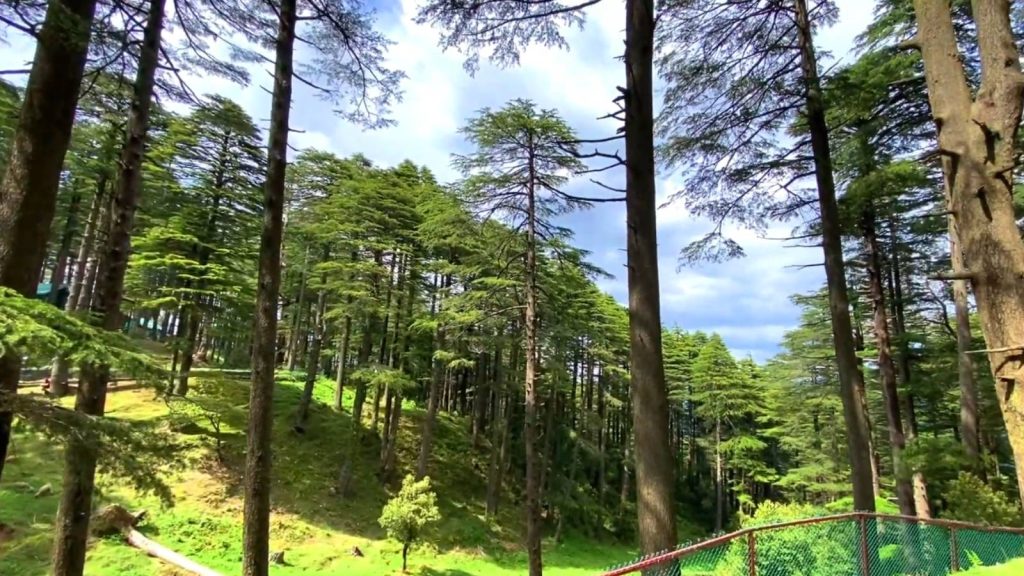
Best Time to Visit
Best months to visit Patnitop are March to June and September to November, when the weather is pleasant and conducive to trekking and sightseeing. Winters (December to February) bring snowfall, creating a magical snow-covered landscape, perfect for winter sports but requiring warm clothing.
Monsoon season (July to August) brings heavy rainfall, which may restrict trekking and outdoor activities but enhances the greenery of the region.
How to Reach
Patnitop is well-connected by air, rail, and road, making it accessible despite its mountainous location:
- By Air: The nearest airport is Jammu Airport (112 km). From the airport, taxis or private vehicles can reach Patnitop, offering a scenic journey through the hills.
- By Rail: Udhampur Railway Station (50 km) is the closest railhead, with onward travel available via taxis or buses.
- By Road: Accessible via NH44, the drive passes through rivers, forests, and small towns, providing stunning views of the surrounding landscape. Regular taxis and buses are available from Jammu and Udhampur.
Where to Stay
Patnitop offers a range of accommodations suited to families, couples, and solo travelers:
- Patnitop Resort & Spa: A modern resort with comfortable rooms, scenic hill views, and facilities for relaxation and adventure activities.
- Hotel Snow View: Budget-friendly accommodation offering cozy rooms and proximity to major attractions.
- Homestays: Provide a local experience with warm hospitality and easy access to nature trails and scenic spots.
10. Yercaud, Tamil Nadu
Yercaud is a charming hill station situated in the Shevaroy Hills of Tamil Nadu. Known for its coffee plantations, serene lakes, and rolling hills, it is often considered a peaceful and budget-friendly alternative to Ooty. Yercaud attracts families, couples, and solo travelers seeking a tranquil escape amidst lush greenery and calm surroundings.
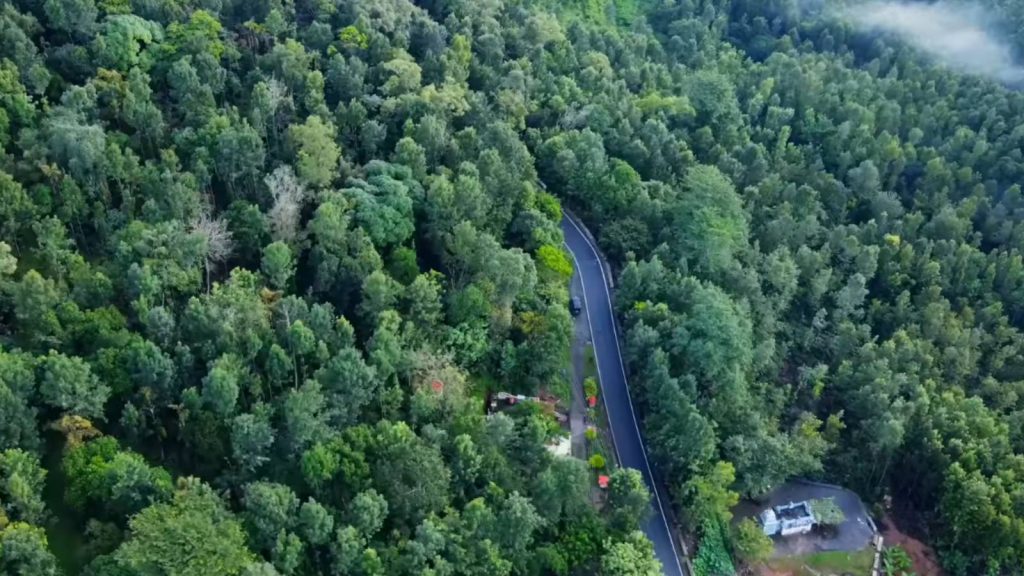
Best Time to Visit
Best time to visit Yercaud is September to March, when the weather is cool and ideal for sightseeing, trekking, and nature walks. Summers (April to June) can be warm, which may make outdoor activities less comfortable, while monsoon months (July to August) bring heavy rainfall, limiting outdoor excursions but enhancing the hill station’s natural beauty.
How to Reach
Yercaud is accessible by air, rail, and road, allowing for easy planning:
- By Air: The nearest airport is Bengaluru International Airport (230 km). From the airport, taxis or private vehicles can reach Yercaud via scenic routes.
- By Rail: Salem Railway Station (32 km) is the closest, with onward travel available by taxi or bus.
- By Road: Accessible via Salem, the road winds through hills, plantations, and forests, providing a pleasant and picturesque drive.
Where to Stay
Yercaud offers a variety of accommodations for different preferences and budgets:
- Yercaud Hill Resort: Comfortable resort with panoramic views of hills and coffee plantations, ideal for families and couples.
- Homestays & Eco-Cottages: Cozy, nature-centric accommodations offering authentic local experiences and peaceful surroundings.
- Private Hotels: Budget-friendly and mid-range hotels with essential amenities and easy access to tourist attractions.
11. Khajjiar, Himachal Pradesh
Khajjiar, often referred to as the “Mini Switzerland of India”, is a picturesque hill station located in the Chamba district of Himachal Pradesh. Nestled at an altitude of around 1,920 meters, Khajjiar is famous for its vast meadows, dense forests, and serene Khajjiar Lake, making it a perfect destination for nature lovers, photographers, and adventure enthusiasts. Its panoramic views of the Dhauladhar and Pir Panjal ranges enhance the charm of this offbeat hill station.
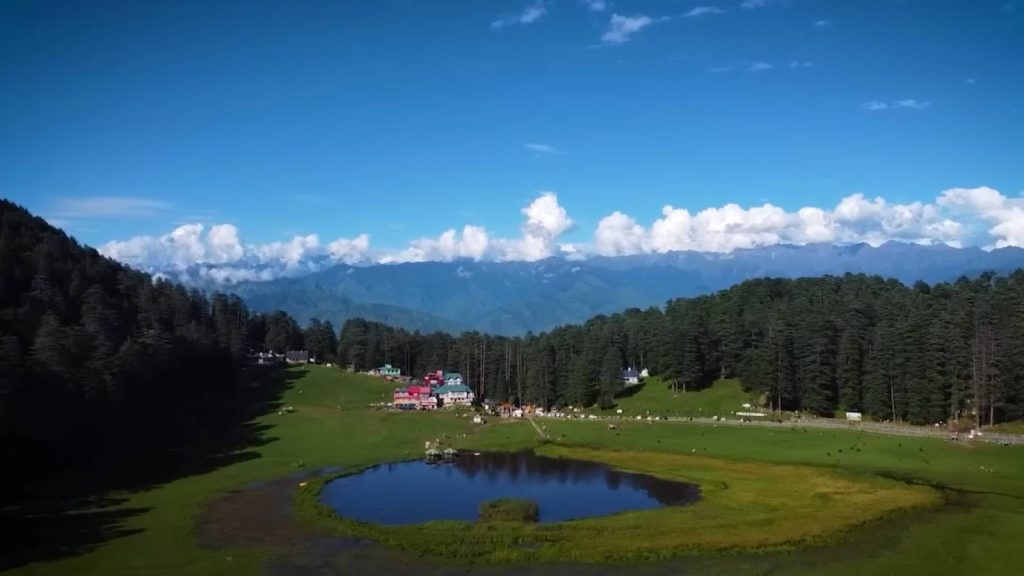
Best Time to Visit
The best time to visit Khajjiar is March to June and September to November, when the weather is pleasant, and the skies are clear, ideal for trekking, photography, and outdoor activities.
Winters (December to February) bring snow, transforming Khajjiar into a winter wonderland suitable for snow activities but requiring warm clothing. Monsoon season (July to August) brings heavy rainfall, which may make travel tricky but enhances the greenery of the meadows.
How to Reach
Khajjiar is well-connected by air, rail, and road, though some planning is needed for smooth travel:
- By Air: The nearest airport is Gaggal Airport, Dharamshala (122 km), with taxis or private vehicles available to reach Khajjiar.
- By Rail: Chamba Railway Station (20 km) is closest, with onward travel via taxis or shared cabs.
- By Road: Accessible via Dalhousie and Chamba, the scenic drive passes through hills, forests, and rivers. Regular taxis and buses connect Khajjiar to nearby towns.
Where to Stay
Khajjiar offers accommodations catering to different preferences:
- Khajjiar Castle Resort: Modern resort with comfortable rooms, scenic views of meadows, and facilities for relaxation.
- Cottages & Homestays: Provide an authentic local experience amidst peaceful surroundings.
- Private Resorts: Ideal for families and travelers seeking comfort with easy access to nature and adventure activities.
12. Mainpat, Chhattisgarh
Mainpat, often called the “Shimla of Chhattisgarh”, is a scenic hill station located in the Surguja district. Situated at an altitude of about 1,100 meters, Mainpat is known for its Tibetan settlements, lush valleys, waterfalls, and offbeat trekking trails, offering a unique blend of culture and nature. It is perfect for travelers seeking peace, adventure, and a less-commercialized destination.

Best Time to Visit
The ideal months to visit Mainpat are October to March, when the weather is cool and pleasant, ideal for trekking, sightseeing, and outdoor activities. Summers (April to June) can be warm, while monsoon (July to September) brings heavy rainfall that may affect trekking and road accessibility but enhances the greenery and beauty of waterfalls.
How to Reach
Mainpat can be accessed by road, rail, and air with proper planning:
- By Air: The nearest airport is Raipur Airport (420 km), with taxis or private vehicles available to reach Mainpat.
- By Rail: Ambikapur Railway Station (180 km) is the closest, with onward travel via taxi or bus.
- By Road: Accessible via Ambikapur and Surajpur, the scenic drive passes through valleys, rivers, and forested hills. Regular taxis and private cars are available from nearby towns.
Where to Stay
Mainpat offers a limited but comfortable range of accommodations for travelers:
- Tibetan Guesthouses: Offers a cultural experience with traditional Tibetan hospitality and local cuisine.
- Eco-Cottages & Homestays: Small, cozy stays ideal for nature lovers and those seeking peace.
- Private Resorts: Provide modern amenities, scenic views, and proximity to trekking trails and waterfalls.
13. Haflong, Assam
Haflong is the only hill station in Assam, situated in the Dima Hasao district at an altitude of about 966 meters. It is a tranquil destination, surrounded by rolling hills, serene lakes, and dense forests.
Known for its orange orchards, scenic viewpoints, and tribal culture, Haflong offers a unique experience away from mainstream tourist circuits, making it perfect for travelers seeking solitude, photography, and nature exploration.
Best Time to Visit
The ideal months to visit Haflong are October to April, when the weather is pleasant, skies are clear, and outdoor activities such as trekking, boating, and sightseeing can be enjoyed comfortably. During these months, the landscape is lush, and the air is crisp, providing ideal conditions for photography and nature walks.
Summers (May to June) are moderately warm but still suitable for travel. Monsoon season (July to September) brings heavy rainfall, which may make road travel challenging and some trekking paths slippery, but the rains transform Haflong into a verdant paradise, with misty hills, flowing streams, and vibrant flora.
How to Reach
Haflong is accessible via air, rail, and road, though being a remote location, careful planning is recommended:
- By Air: The nearest airport is Silchar Airport (96 km). From here, taxis and private vehicles can take you to Haflong through scenic routes, passing through tea gardens, rivers, and small villages.
- By Rail: Haflong Railway Station connects to major towns in Assam, offering a convenient and scenic train journey that passes through lush landscapes and rolling hills.
- By Road: Haflong is accessible via Silchar and Guwahati, with well-maintained roads. The drive is picturesque, featuring cascading streams, terraced hills, and tribal villages. Regular taxis, shared cabs, and private vehicles are available for travelers, though buses may be limited.
Where to Stay
Haflong offers accommodations ranging from basic lodges to modern resorts:
- Haflong Tourist Lodge: Comfortable rooms with beautiful views of hills and lakes, ideal for families and solo travelers seeking tranquility.
- Local Guesthouses & Homestays: These provide an immersive cultural experience, offering traditional food, friendly hosts, and a chance to interact with local communities.
- Private Resorts: Equipped with modern amenities, these resorts offer serene surroundings, gardens, and recreational facilities such as nature walks, making them perfect for a relaxed stay.
14. Matheran, Maharashtra
Matheran is a quaint hill station in the Raigad district of Maharashtra, perched at an altitude of approximately 800 meters. It is famous for being Asia’s only vehicle-free hill station, which ensures a peaceful, pollution-free environment.
Matheran is dotted with dense forests, rolling hills, colonial-era bungalows, and more than 38 viewpoints, offering breathtaking vistas of the Western Ghats. Its vintage charm, scenic beauty, and tranquil environment make it a unique getaway from urban life.
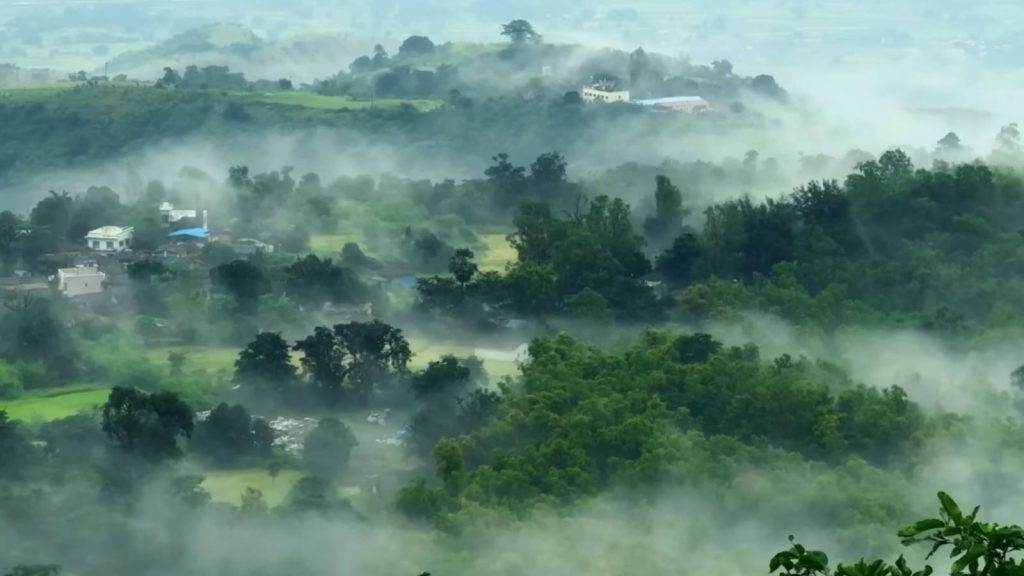
Best Time to Visit
The best months to visit Matheran are October to May, when the weather is cool, pleasant, and ideal for sightseeing, trekking, and nature walks. The monsoon season (June to September) transforms the hills into a lush green paradise with misty waterfalls, though some trails may be slippery or temporarily closed for safety. Winters (December to February) are mild and perfect for enjoying sunrise and sunset views at the various viewpoints.
How to Reach
Matheran’s unique status as a vehicle-free hill station makes the journey part of the experience:
- By Air: The nearest airport is Chhatrapati Shivaji International Airport, Mumbai (120 km). From Mumbai, taxis or private vehicles can reach Neral, the base town for Matheran.
- By Rail: Neral Railway Station (21 km) connects to Mumbai and other cities. From Neral, visitors can reach Matheran via the toy train, horseback, or walking along the scenic paths.
- By Road: Travelers can drive to Neral and then proceed to Matheran on foot, horseback, or via the toy train. The road passes through verdant ghats, rivers, and dense forests, providing a memorable prelude to the hill station experience.
Where to Stay
Matheran offers a variety of accommodations suited to all types of travelers:
- Matheran Hill Resorts: Modern resorts offering spacious rooms, scenic views, and amenities for families and couples.
- Heritage Hotels & Guesthouses: Vintage-style accommodations maintaining colonial-era charm, located near viewpoints and nature trails.
- Homestays & Eco-Cottages: Cozy, environmentally friendly stays that offer local cuisine, nature-centric experiences, and peaceful surroundings.
15. Araku Valley, Andhra Pradesh
Araku Valley is a scenic hill station in the Visakhapatnam district of Andhra Pradesh, Located in the Eastern Ghats at an altitude of around 1,000 meters. It is renowned for its coffee plantations, waterfalls, lush greenery, and tribal culture.
Araku Valley is also famous for its scenic train journey through tunnels, bridges, and valleys, offering travelers an immersive nature experience. This hill station is perfect for those seeking adventure, cultural exploration, and tranquil surroundings.

Best Time to Visit
The ideal months to visit Araku Valley are October to March, when the weather is cool, pleasant, and ideal for sightseeing, trekking, and coffee plantation tours. Summers (April to June) can be warm but manageable, while monsoon months (July to September) bring heavy rainfall, making waterfalls more vibrant but some trekking trails slippery. This period also turns the valley into a lush, green haven, perfect for nature photography.
How to Reach
Araku Valley is well-connected by air, rail, and road, providing multiple travel options:
- By Air: The nearest airport is Visakhapatnam Airport (115 km). From there, taxis or private vehicles can take travelers through scenic routes passing through hills, forests, and plantations.
- By Rail: Araku Railway Station connects to Visakhapatnam and other towns. The train journey itself is famous for its beautiful tunnels, bridges, and panoramic views of the valley, making it a tourist attraction.
- By Road: Accessible via Visakhapatnam, the road journey winds through lush hills, coffee estates, and tribal villages, offering a visual treat for travelers. Regular taxis, buses, and private vehicles are available.
Where to Stay
Araku Valley offers accommodations that combine comfort with a close-to-nature experience:
- Coffee Estate Stays: Stay within coffee plantations, enjoy fresh air, scenic views, and guided plantation tours.
- Resorts & Hotels: Modern facilities with comfortable rooms and scenic views of valleys and hills, suitable for families and couples.
- Eco-Cottages & Homestays: Peaceful, nature-centric accommodations offering authentic local cuisine and immersive cultural experiences with the tribal communities.
Seeking adventure, calmness, or scenic photography, these hidden places provide memories you won’t find in mainstream tourist spots. Visit them now—before they become the next big trend.
